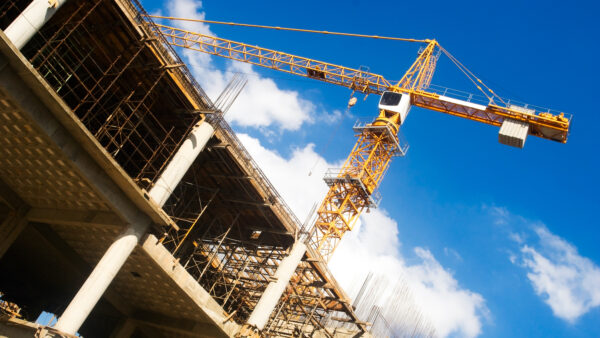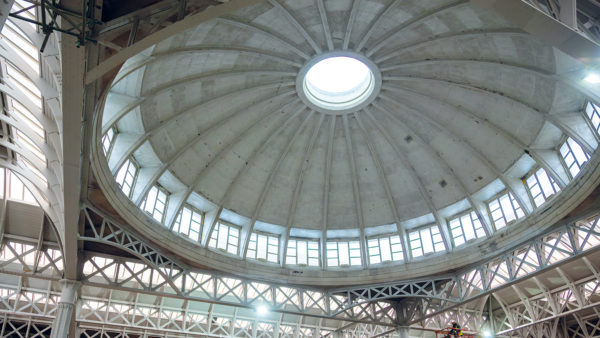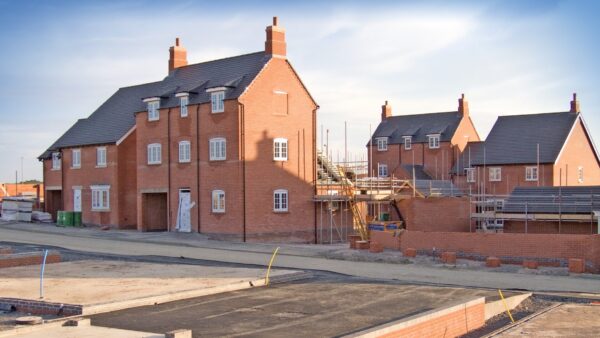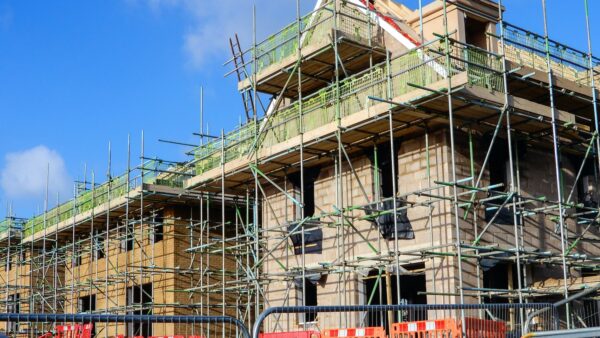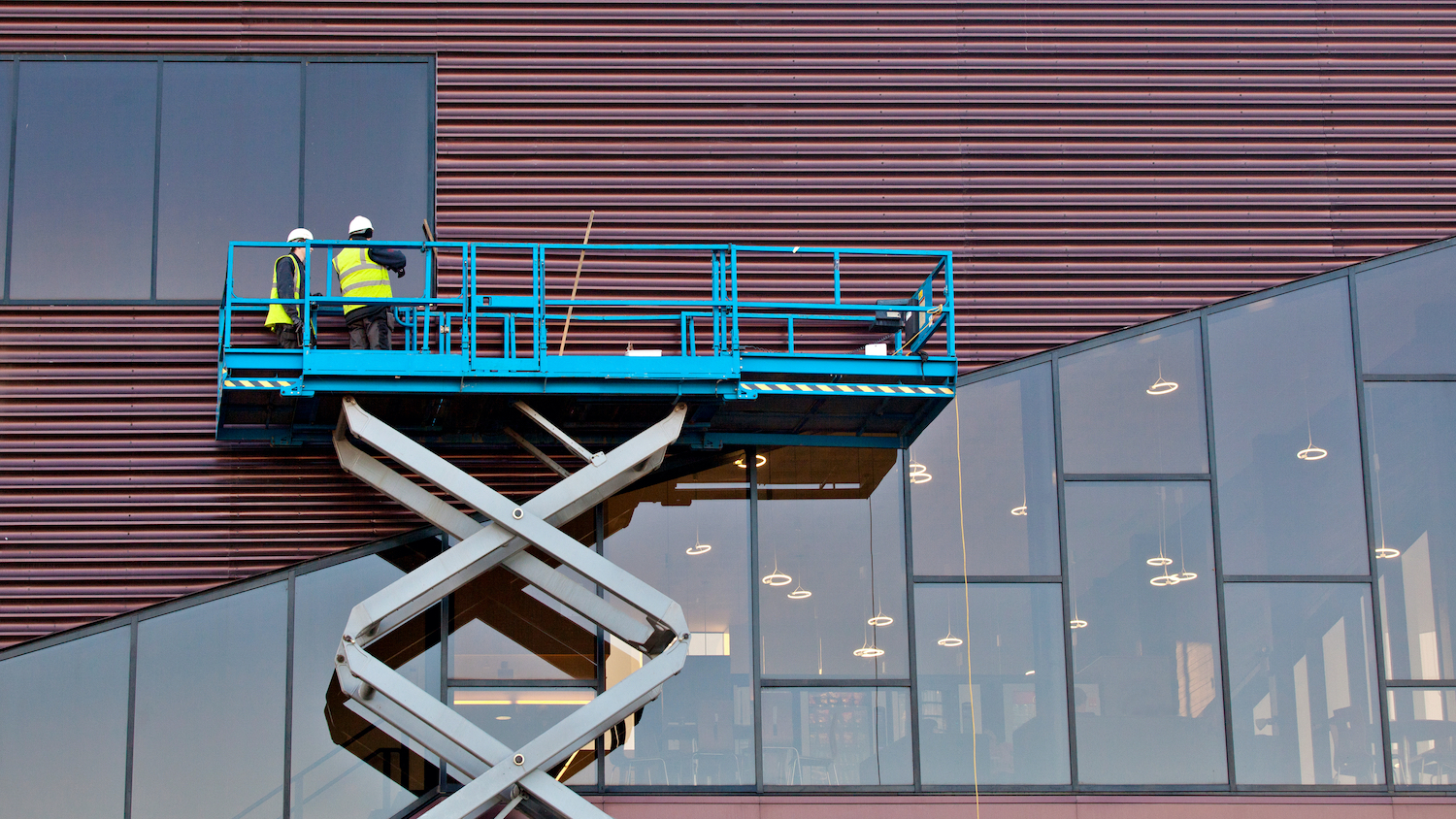Widespread adoption of digital technologies and module can help the industry address rising costs and labour shortages, writes Nitesh Patel.
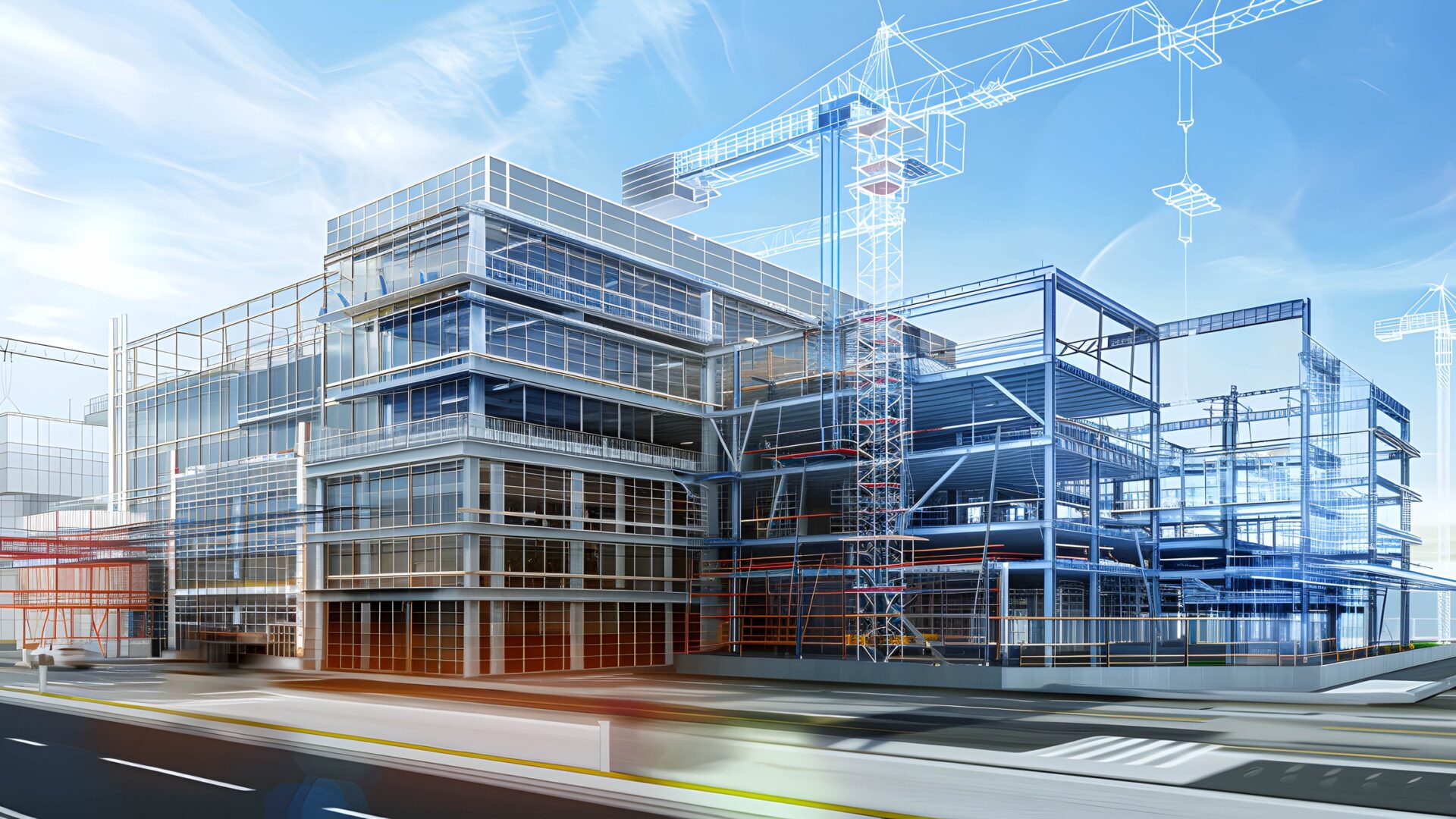
Despite economic activity and construction output being weak for most of the past two years, there is little sign of this feeding through to lower building costs. In fact, the construction industry is grappling not only with reduced demand but also with persistent inflationary pressures driven by rising input costs, notably wage inflation.
For most of the past year, the sector was waiting for government announcements of the 10-year industrial and infrastructure strategies, which came in June. While these strategies, in addition to extra government spending and planning reforms, should boost construction activity over time, we can also expect costs to rise.
Based on Building Cost Information Service (BCIS) data, the annual building cost inflation rate has eased from a peak of 14.6% in May 2022 to 3.5% in May 2025. However, this is still 30.8% above pre-pandemic levels.
The graph below shows the difference in the month-on-month change in labour costs and materials price inflation. After the two shocks highlighted above in 2021 and 2022, inflationary pressures are now mostly coming from the labour market. A situation such as this has not been seen since October 2020 and indicates an important shift in the drivers of inflation.
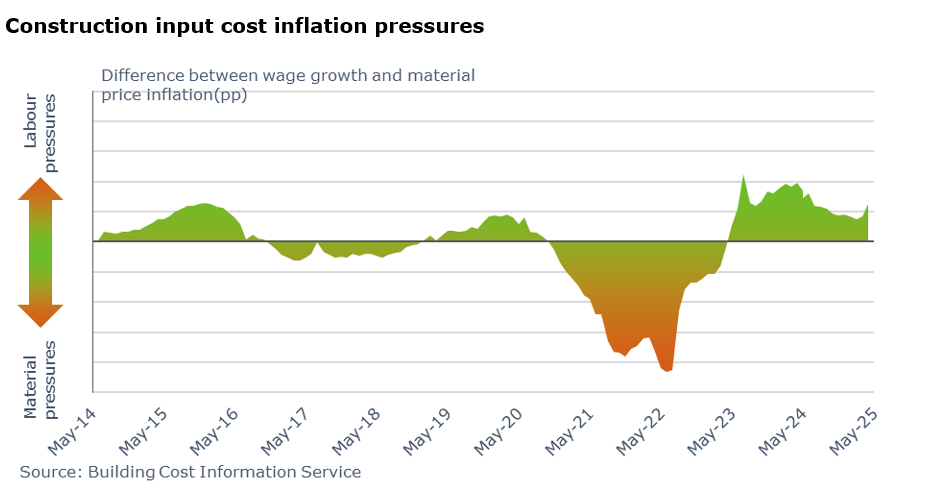
Thin profit margins
Labour costs have escalated partly due to a shortage of skilled workers, and since April, firms have also seen higher costs from the increase in employers’ National Insurance contributions (NIC).
While all construction firms will see the same change, they will affect packages or elements differently, depending on the labour intensity of the work involved. For instance, internal walls and demolition are more labour-intensive than vertical transportation and façades, which incorporate a significant material component.
Input costs may also be pushed up if UK-based manufacturers of construction materials raise their prices to offset their higher NIC costs.
High wage inflation is putting significant pressure on contractors’ margins. On an individual project basis, contractors now typically make a profit of between 3% and 6%. Analysis of the larger firms’ financial results reveals that, in some cases, big contractors make even less.
For most of the period since mid-2020, profit margins have come under pressure across the supply chain, with building costs rising at a faster pace than prices charged by contractors. The NIC increase creates another financial challenge where firms can only absorb the extra cost. Low margins increase the risk of contractor insolvency as well as hamper project delivery.
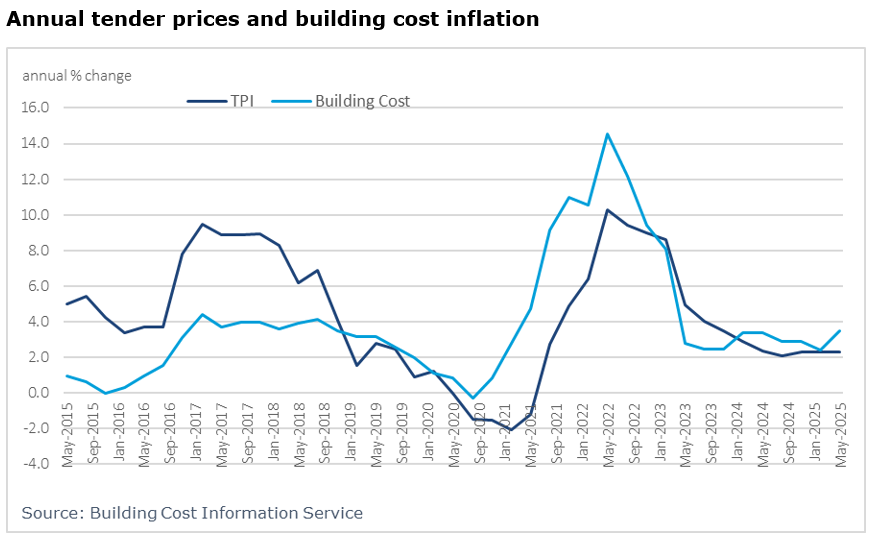
Embracing digital
In facing up to these challenges, there are options available for firms to keep costs under control. One is moving towards more offsite modular methods of construction to reduce labour costs and construction times without sacrificing quality.
Construction also remains a slower adopter of digital tools than other major sectors. For example, firms should normalise the use of Building Information Modelling (BIM) to enhance efficiency and productivity.
BIM allows for detailed planning and simulation of construction projects, as well as identifying potential waste. Ultimately, BIM reduces costs, allowing clients to build their projects virtually during the design phase, before physical construction begins.
A move towards greater adoption of digital technologies in construction could help firms address two of their biggest challenges, rising costs and labour shortages, which, in turn, could help revive their meagre margins.
Nitesh Patel is a lead economist at Turner & Townsend.




